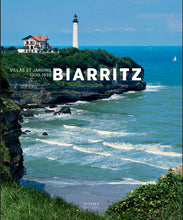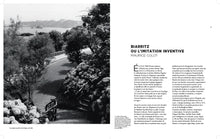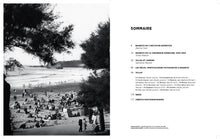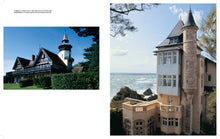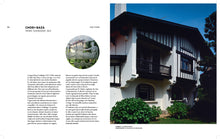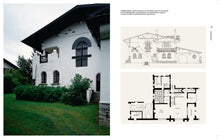
- En savoir plus
- Les auteurs
From 1854, the imperial family made Biarritz their resort, leading to the rapid development of what was then only a modest fishing village. Attracted by the presence of Eugénie and Napoleon III, wealthy families settled in immense properties. Twenty-five years later, the Empress put her vast estate up for sale; it was immediately subdivided and divided into 269 building plots. Only the Hôtel du Palais, built on the ruins of the Villa Eugénie, and the Chapel survive from the imperial dream. The Belle Époque confirmed Biarritz in its international tourist vocation and the luxurious houses and villas made of Bidache stone flourished, often surrounded by gardens and signed by great names in French architecture, like the Océana and Natacha villas of Henri Wild, which are Art Nouveau masterpieces.
After the Great War, Biarritz was modernized. The 1925 Paris Exhibition launched the Art Deco style which was chosen for the design the new casino. The automobile, the plane, women's fashion, jazz, sport, heliotropism... these were the new symbols of modern life. The resort expressed the tastes of this youthful and vibrant society. The villas open onto nature and extend into geometric gardens designed like open-air lounges.
The styles and aesthetic issues refer to the debates surrounding the trends of the time. The Labourdin or Hispanic neo-Basque underlines the faith in the revival of local genius, while Art Deco and modernism reflect the adherence to cosmopolitanism and internationalism.
• 23 x 28.5 cm
• 176 pages
• 150 illustrations
• Paperback with flaps
• ISBN: 978-2-91554-2998
Text in French only
Maurice Culot est directeur des Archives d’architecture moderne et d’Arcas, agence d’architecture. Il fait vivre depuis quarante ans son amour des années 1920 et 1930 dans des constructions et des livres qui visent à une renaissance architecturale et urbaine inspirée des meilleures réalisations de la première moitié du XXe siècle.
Claude Laroche est architecte et ingénieur d'études au service régional d'Aquitaine de l'Inventaire général des monuments et des richesses artistiques de la France.
Jean-Claude Lasserre a été conservateur général du patrimoine depuis et directeur de la Commission régionale de l’Inventaire d’Aquitaine.
Olivier Ribeton est conservateur au Musée Basque et de l’histoire de Bayonne depuis 1988.
Jean-Baptiste Minnaert est historien de l’architecture et professeur d’histoire de l’art à l’université Paris-Sorbonne (Paris-IV).
En coédition avec la Cité de l’architecture & du patrimoine







